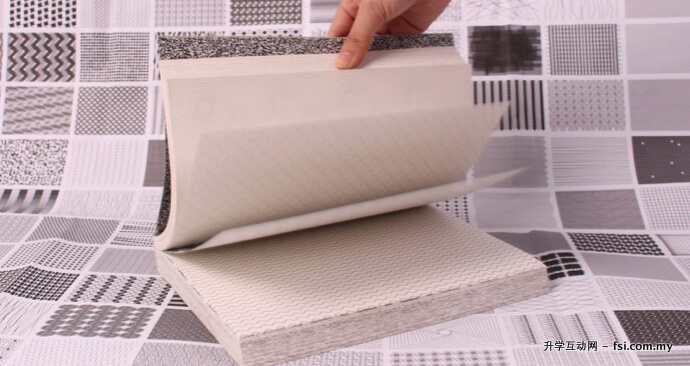THOUGHTS OF HOME
Cheong Tuck Wai present Linger, a look at things we insentiently miss, for times we long for, writes SARAH NH Vogeler
What is it about paintings heavily steeped in nostalgia that just wreaks havoc in our hearts? Like those 1940s Norman Rockwell illustrations for the Saturday Evening Post which makes you desperately homesick, the bearable ache for that home of the immaculately kabaya-clad grandmother sitting on her worn, make shift bench chewing betel leaves and the grandfather lovingly tending to his flock of geese, his voice susurrus, hardly above a whisper while you watch quietly from a window. Yes, living in frigid “shoeboxes” in mad cities, as many of us do makes the pining rise to fever-pitch.
Melancholy is a theme very much entrenched in Cheong Tuck Wai’s works as seen in all eight canvases – a surprisingly minuscule amount of works for a solo, and because Linger are works wistful and beautifully-quiet, they come out melodious, soft yet more than enough to command attention. It’s one of those charming paradoxes which do not occur often but when they do, enchants us so.
The artist confides: “Initially, I wanted to create outdoor scenery, and began work on solitary buildings, vast grasslands, trees, an empty sky, the crashing of waves, a child standing in a corner. I’m particular to this kind of style, and returned to Kuantan, sifting through photographs and searching for inspiration.” He adds” Looking back, I realized connections were important, that each painting interrelates, the parts constituting a whole. I started again. When informed where my show was going to be held, home became my theme. Stories told from the perspectives of the ‘traveller’ who has wandered far.” We see that dynamic yearning all too clearly.

In Old TV Set – Reunion, Tuck Wai brings us to his father’s childhood home in Batu Arang, Selangor. The settlement, dubbed Mini Gold Hill due to its glory days as a leading mining town, was rarely visited by his family, except on special occasions. He recall vividly of the six hour bus ride, the motion sickness, the horror of a repeat performance on the return trip. But what Tuck Wai remembers most was closeness, of laughter and crying afterwards because all was over too soon.
We imagine his family huddled in front of that television set after a meal. We hear their chatter, and everything pulsates with beauty and happiness – even the Earth sings.

Granny’s Rattan Sofa – Awaiting just makes you choke back that horrible lump suddenly appearing in our throats.
Tuck Wai recollects: “That rattan sofa in my grandmother’s house has been there for ages. The knots have over time come undone. I see her and my uncle whenever I return and we’d chat about life in general; my life in the city is a subject they’re very interested in.”
He continues:” She gets many visitors from the neighborhood, her peers mostly, as the young ones have long since left seeking greener pastures and come home only sparingly. To prevent cats from sitting, sleeping or soiling the cushion seats, granny kept them upright all the time and only sets them down when there were more guests, grandchildren especially. She has since moved, and her previous house, along with other homes in the area, will be demolished soon. I never knew what happened to that rattan sofa.”
OF BUILDING BRIDGES AND CONNECTIONS
Much of Tuck Wai’s works are reflections of his own character. The artist is discreet, quiet by nature and, for most parts, pensive. When asked to name an artist he reveres, Anselm Kiefer was his prompt reply.
The moralistic, old-school history painter and sculptor works on imposing scales in materials including straw, wood, gold leaf, lead, soil, copper wire, smashed ceramics and diamonds, his concepts influenced by, amongst others, Albert Speer’s architectural designs, German Romanticism, the Holocaust, Egyptian lore and Paul Celan’s poems.
On what he thinks is the purpose of an artist, Tuck Wai replies:” The artist is a soul catcher, to not only record the facts of history but to build bridges, convey myriads of emotions and to connect with people’s minds.”
Through Linger, he does exactly that: White Bed Sheet – Warmth are the fresh sheets his mother would place over his bed in their Kuantan home.
The texture of linen coarse and uneven, the mattress steadily dipping from years of use, and mosquitoes running amok make sleeping almost perilous.
He’d set the fan at its highest speed to chase the little antagonists away, but despite all the troublesomeness, Tuck Wai’s heart becomes heavy when the time to leave approaches.
From Carl Sandburg’s 1922 collection Home and Steel, Linger brings to mind, the poet’s Home Thoughts: –
THE SEA rocks have a green moss.
The pine rocks have red berries.
I have memories of you.
Speak to me of how you miss me.
Tell me the hours go long and slow.
Speak to me of the drag on your heart,
The iron drag of the long days.
I know hours empty as a beggar’s tin cup on a rainy day,
empty as a soldier’s sleeve with an arm lost.
Speak to me.
Cheong Tuck Wai’s Linger is a symphony of memoirs which has that “saudade” sense to it – the Portuguese word pronounced as “saw-da-djee.” It’s those bittersweet feelings for someone or something from the past, and through them, Tuck Wai gives back life to people and things who/which are no longer with him.

ABOUT THE ARTIST
Born in 1979 in Kuantan, Pahang and lived and works in KL, Tuck Wai completed his first Diploma in Illustration in 2001 at DASEIN ACADEMY OF ART and later took up his Fine Art studies between 2002 and 2004. He began teaching fine art while he was on the course and is now a senior part-time lecturer in Dasein Fine Art department. His work centers on figure painting via mixed media which attempts to seek balance between mind and soul.
A regular participant in the local art circuit, Tuck Wai won the Malaysia Nokia Arts Award in 2003. He has shown at the Philip Morris Malaysia Art Awards (2003) and the Young Contemporaries Award (2004), both at the National Visual Art Gallery, Malaysia. He received the Gold Award from the United Overseas Bank (UOB) annual competition under the Painting of the Year category in 2013. In 2009 and 2011, Tuck Wai was among the finalists in the Malaysia Emerging Artist Award (MEAA). In 2013, Tuck Wai was announced as the winner along with four others.
Originally published in NEW SUNDAY TIMES
达尔尚艺术学院 Dasein Academy of Art
http://www.fsi.com.my/会员专区/college-profile/?sponsor_id=410











